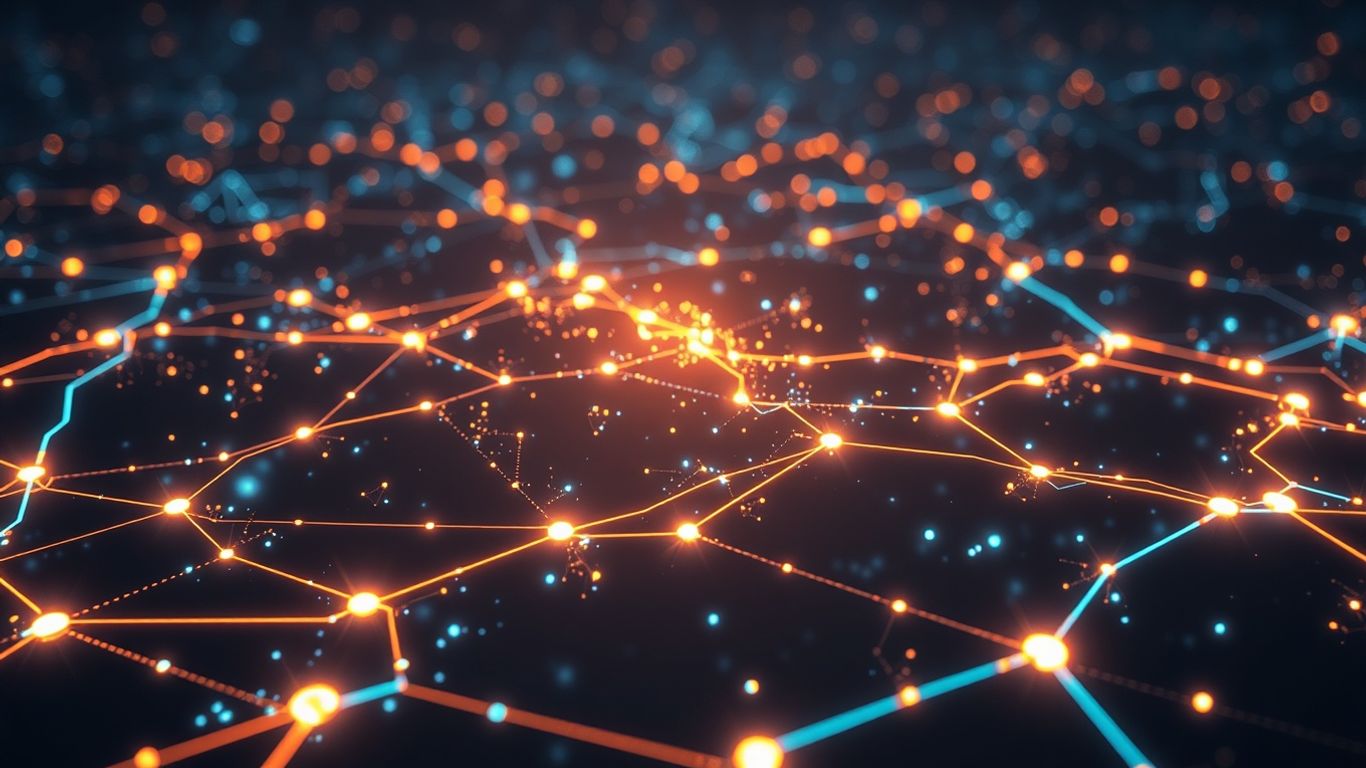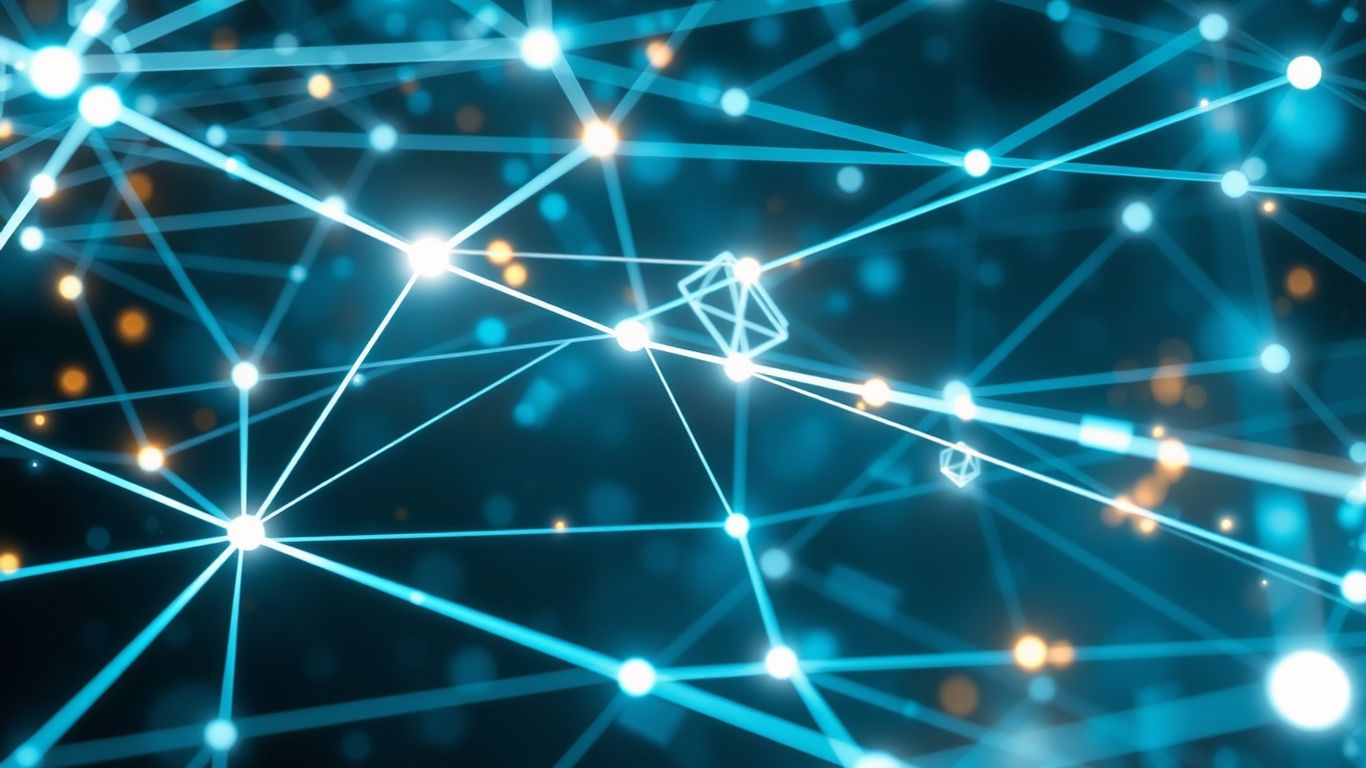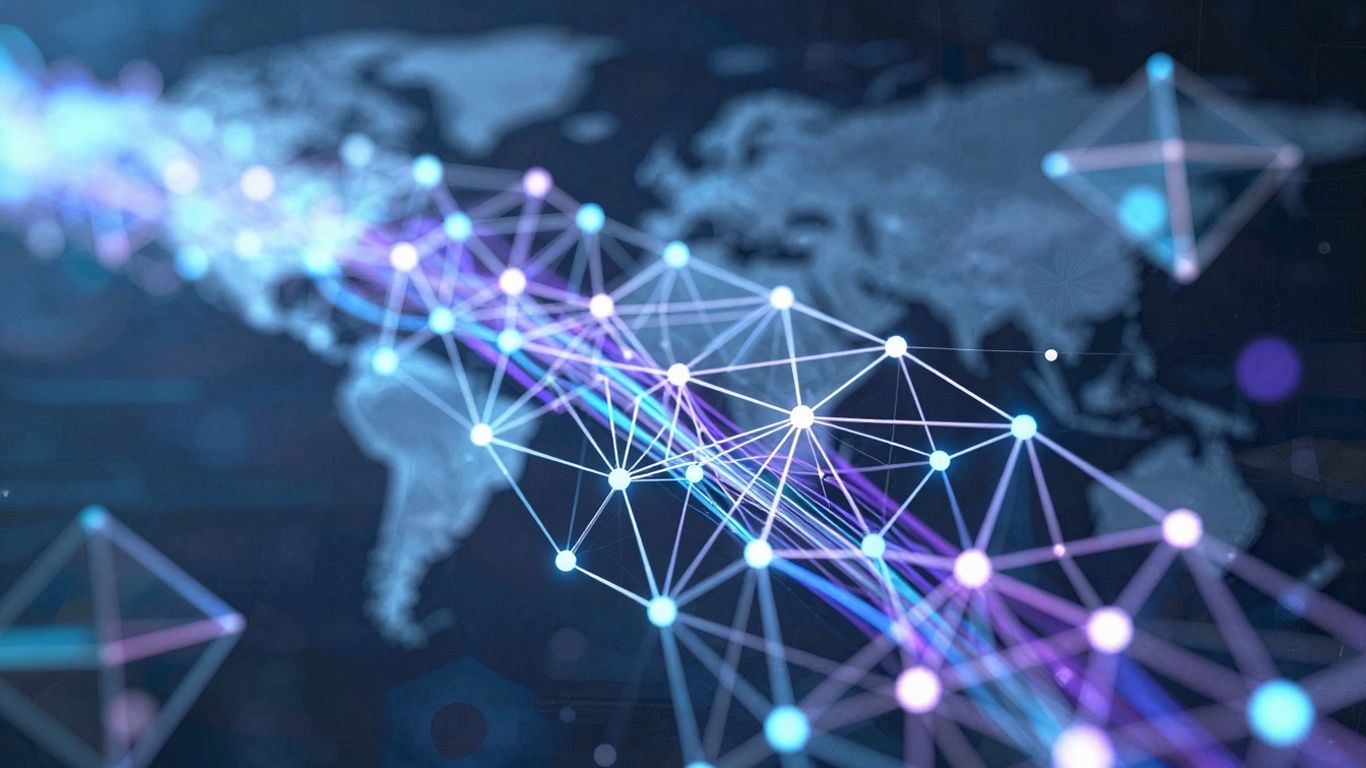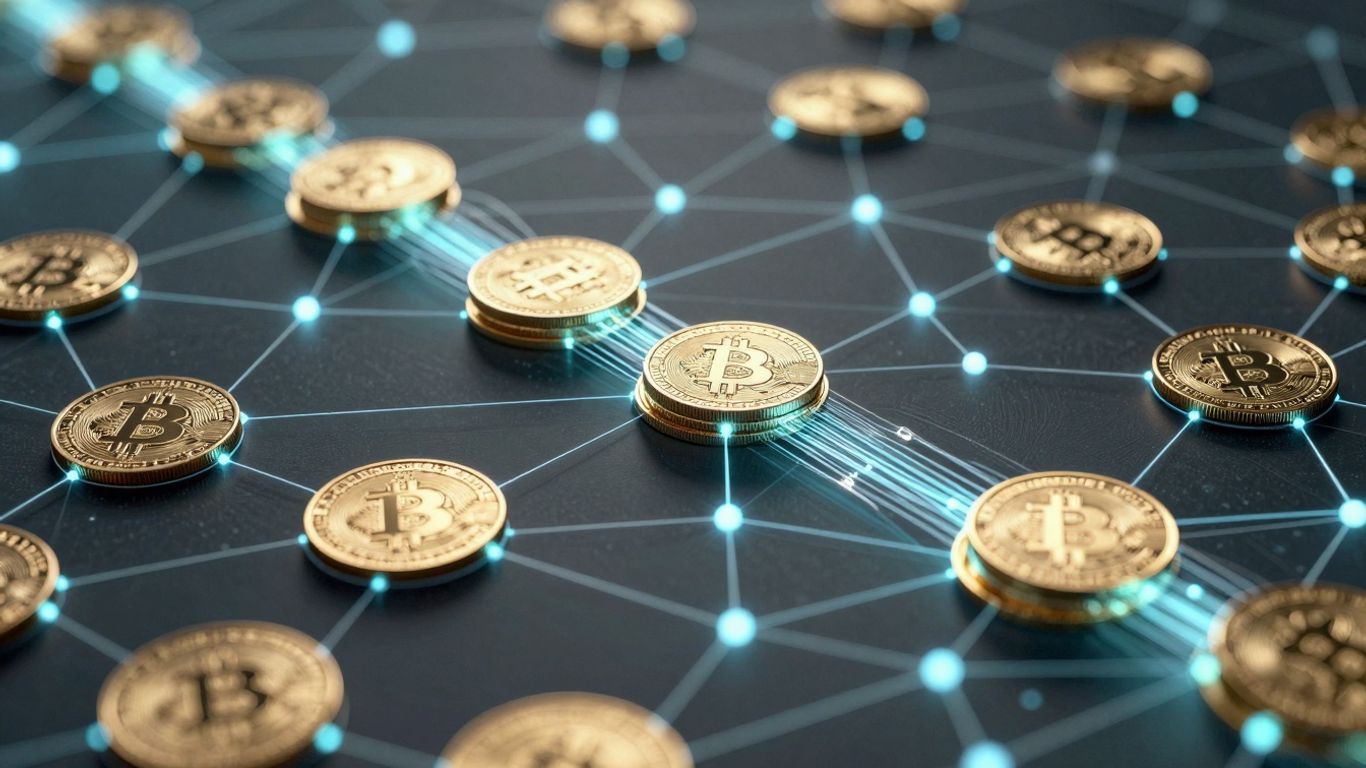[ newsletter ]
Stay ahead of Web3 threats—subscribe to our newsletter for the latest in blockchain security insights and updates.
Thank you! Your submission has been received!
Oops! Something went wrong. Please try again.
Explore on-chain forensics: methods, tools, and challenges in tracing crypto transactions and entities. Essential for investigations and compliance.





Tracking digital money can be a real headache, especially when folks try to hide what they're doing. This is where on-chain forensics comes in. It's like being a detective, but instead of looking for fingerprints, you're following digital breadcrumbs left on the blockchain. We'll look at how this whole process works, the tools people use, and why it's getting more important by the day. It's not always simple, but it's key to keeping the digital world a bit safer.
So, what exactly is on-chain forensics? Think of it as digital detective work, but instead of dusty crime scenes, we're looking at the public ledger of a blockchain. It's all about digging into the transaction history, the addresses involved, and how digital assets move around. Because blockchains are designed to be transparent, every transaction leaves a digital breadcrumb. On-chain forensics is the practice of following these breadcrumbs to understand who did what with their crypto. It's not just for catching bad guys, though; it's also about making sure the whole system stays trustworthy.
At its heart, blockchain tracing is about following the money, or rather, the digital coins. When a transaction happens, it's recorded permanently on the blockchain. We can see where the coins came from and where they went. This is super useful for a bunch of reasons. For instance, if a crypto exchange gets hacked, investigators can trace the stolen funds to see where they end up. This helps law enforcement track down criminals and potentially recover the stolen assets. It’s like watching a package move through a global postal system, but instead of packages, it’s digital currency.
Here’s a simplified look at the process:
The pseudonymous nature of cryptocurrency means that while we can see transactions, directly knowing who is behind an address isn't always straightforward. This is where the real investigative work comes in.
Just looking at the blockchain itself can only get you so far. The real power comes when you combine what you see on-chain with information from the outside world – what we call off-chain intelligence. This could be anything from public records and social media posts to information from private databases or even tips from informants. For example, if an on-chain analysis shows a lot of activity from a particular wallet, and off-chain research links that wallet to a known scam website or a specific individual, you've got a much stronger case. It’s about connecting the digital dots to the real world.
Think about it like this:
Combining these two types of information helps build a more complete picture of illicit activities and the people behind them. It’s a bit like putting together a puzzle where some pieces are digital and others are physical.
To do this kind of work, investigators need the right gear. There are specialized software platforms designed specifically for blockchain forensics. These tools can automatically cluster addresses that likely belong to the same entity, trace funds across multiple blockchains, and identify suspicious patterns. Some platforms even use artificial intelligence to help spot complex schemes that a human might miss. Having these tools makes the process much faster and more accurate, allowing investigators to keep up with the fast-paced world of crypto. For instance, tools can help identify sanctioned entities and their associated wallets, which is vital for compliance and security.
Some key capabilities of these tools include:
These tools are constantly being updated to keep pace with new obfuscation techniques used by criminals, making them indispensable for modern digital investigations.
When we talk about figuring out what's happening on the blockchain, we're really talking about piecing together a puzzle. It's not always straightforward, especially since most transactions are linked to pseudonymous addresses rather than real names. So, how do investigators actually do it? They use a few main techniques.
First up is address clustering. This is where analysts look at transaction patterns to group addresses that likely belong to the same person or organization. Think of it like finding multiple fingerprints at a crime scene that all belong to the same suspect. By connecting these addresses, investigators can start to build a picture of who controls what, even if they don't know the real-world identity yet. It's a bit like detective work, but with digital breadcrumbs.
Then there's transaction tracing, which is pretty much what it sounds like. You follow the money, or in this case, the digital assets, from one address to another. This helps map out the flow of funds, which is super important for understanding how money moves in illicit schemes. It's about seeing the entire journey of a transaction, from start to finish.
Here’s a simplified look at how transaction tracing might work:
Finally, investigators don't just stick to what's on the blockchain. They also bring in outside information, what's called off-chain intelligence. This could be anything from public records to social media posts, or even information from blockchain compliance monitoring services. Combining these different pieces of information is what really helps to connect the dots between on-chain activity and real-world entities.
The pseudonymous nature of blockchain means that simply looking at transaction data isn't enough. Investigators must skillfully combine on-chain analysis with external data sources to build a complete investigative picture and attribute activity to specific actors or groups.
It's a complex process, for sure. You're dealing with a lot of data, and criminals are always trying to find new ways to hide their tracks. But these methods, when used together, give investigators a powerful way to see what's happening in the crypto world.

Investigating crypto-related activities isn't always straightforward. The very nature of blockchain, while offering transparency in transactions, also presents some unique hurdles for investigators. It's a bit like trying to track someone through a city where everyone wears a mask and uses a different alias for every shop they visit.
One of the biggest headaches is dealing with pseudonymity. Most blockchain transactions don't directly link to real-world identities. Instead, you've got these digital addresses, which can be used by anyone. Criminals are pretty good at using these addresses to hide their tracks. They might use multiple addresses for a single operation, making it tough to connect the dots. Plus, there are services out there designed specifically to mix up transactions, making it even harder to follow the money. Think of it like a digital shell game.
The speed at which funds can be moved, especially across different blockchains using bridges, means that by the time an investigator identifies suspicious activity, the money might already be long gone and laundered through multiple channels.
Another major challenge is the borderless nature of blockchain. A transaction can happen between parties in different countries in seconds, but trying to get law enforcement from those countries to cooperate can take months, if it happens at all. There's no central authority to go to for a simple request. This international complexity means that criminals can exploit different legal systems to their advantage, making it hard to bring them to justice.
What's also tricky is that criminals are constantly changing their methods. They're getting smarter, using new technologies and tactics to stay ahead. For instance, ransomware attacks are becoming more sophisticated, and terrorist groups are finding new ways to use crypto. It feels like a constant game of catch-up.
The constant innovation on both the legitimate and illicit sides of crypto means that investigators must continuously adapt their tools and techniques. It's not a static field; what worked last year might not work today.
When you're trying to track down illicit activity on the blockchain, it's like looking for a needle in a haystack, but the haystack is constantly growing and changing. That's where technology really steps in. Artificial intelligence, especially machine learning, is becoming a game-changer. These systems can sift through massive amounts of transaction data way faster than any human could. They're trained to spot patterns that might indicate something shady, like unusual transaction volumes, rapid fund movements between many different addresses, or connections to known bad actors. This ability to process and analyze data at scale is what makes AI so powerful for identifying threats before they cause too much damage. Think of it as having a super-smart assistant that never sleeps and can spot anomalies you might miss.
Beyond just AI, there are specialized platforms built specifically for blockchain forensics. These aren't just simple block explorers; they're sophisticated tools that aggregate data from various blockchains and provide a more complete picture. They often combine on-chain data with off-chain intelligence, like social media activity or known scam websites, to build a more robust profile of entities involved in transactions. These platforms can help investigators:
These platforms are designed to make sense of the complex, pseudonymous nature of blockchain transactions, turning raw data into actionable intelligence for law enforcement and compliance teams.
Technology also plays a big role in preventing problems in the first place, which indirectly helps forensics. Automated auditing tools, often powered by AI, can scan smart contracts for vulnerabilities before they are deployed. This is super important because many exploits happen because of bugs or design flaws in the code. By catching these issues early, developers can fix them, preventing potential hacks and the need for forensic investigations down the line. These tools can identify things like:
It's all about building a more secure foundation for the crypto ecosystem, which in turn makes the job of forensic investigators a bit easier when things do go wrong.
On-chain analysis isn't just for tracking down bad actors; it's become a really important part of how the whole crypto world works. It brings a level of transparency that you just don't get with traditional finance. By looking at the data directly on the blockchain, we can see where money is going, how it's being moved, and who might be involved. This is super helpful for a bunch of different reasons.
This is probably the most talked-about application. When criminals try to use crypto for illegal stuff, like money laundering or funding illicit activities, they leave a trail. On-chain analysis lets investigators follow that trail. They can link different addresses together, figure out how funds are flowing, and ultimately identify the people behind the scams. It's like digital detective work. The ability to trace these transactions makes it much harder for criminals to operate freely. This increased risk of getting caught can really deter them from using crypto in the first place. It's a big step in making the digital asset space safer for everyone.
For businesses in the crypto space, staying on the right side of the law is a huge deal. Regulators are paying a lot more attention, and they need ways to make sure companies are following the rules, especially around anti-money laundering (AML) and know-your-customer (KYC) requirements. On-chain analysis tools help with this. They can monitor transactions, flag suspicious activity, and provide the data needed for compliance reports. This helps legitimate businesses build trust with customers and avoid hefty fines. It's all about creating a more responsible and secure environment for digital assets.
Beyond just crime fighting and compliance, on-chain analysis plays a role in the overall health of the crypto ecosystem. It helps identify vulnerabilities in smart contracts or protocols before they can be exploited. For example, tools can analyze transaction patterns to detect potential rug pulls or other types of fraud. This proactive approach helps protect investors and maintain confidence in the technology. It's a constant effort to stay ahead of new threats, especially as new technologies like cross-chain bridges become more common. The goal is to build a more robust and trustworthy digital asset space for the long run. Blockchain forensics is key to this ongoing effort.

The world of on-chain forensics is always changing, and keeping up is key. As blockchain tech gets more complex, so do the ways people try to use it for bad stuff. This means investigators need to get smarter too.
We're seeing a big push towards using machine learning (ML) and artificial intelligence (AI) more and more. These tools can sift through massive amounts of blockchain data way faster than humans ever could. Think about spotting weird transaction patterns that might signal a scam or money laundering. AI can help flag these suspicious activities in real-time, making investigations quicker and more effective. It's not just about finding problems after they happen; it's about predicting them before they get out of hand. For instance, AI can analyze wallet behavior to identify potential risks, like connections to known illicit actors or participation in scam projects. This helps investigators focus their efforts where they're needed most.
Blockchains used to be pretty separate, but now things are getting more connected. Cross-chain bridges and other interoperability solutions mean that money can move between different blockchains pretty easily. This is great for users, but it also makes it harder for investigators to follow the money trail. The future is all about developing tools that can trace assets and transactions across these different chains. Imagine a hacker moves stolen funds from Ethereum to a less regulated chain, then uses a bridge to get them to another network. Advanced forensics will need to connect those dots. This kind of capability is becoming really important for tracking down sophisticated criminal networks that operate across multiple blockchains.
Instead of just reacting to hacks and scams, the trend is moving towards being more proactive. This means using on-chain analysis not just to investigate, but to prevent. Think about continuous monitoring of smart contracts for vulnerabilities or analyzing network activity for early signs of trouble. It's about building a more secure ecosystem from the ground up. Tools are being developed that can automatically check for risks like rug pulls or identify wallets linked to illicit activities before any damage is done. This shift towards prevention is a big deal for making the digital asset space safer for everyone. It's a collaborative effort, with groups like TRM Labs working with law enforcement to disrupt criminal enterprises before they cause major damage. The goal is to make it so difficult and risky for criminals that they simply move on to easier targets, or better yet, don't engage in illicit activities at all.
So, we've looked at how people are using blockchain data to figure out what's going on, like tracking down where money goes and who's moving it. It's not always straightforward, especially with all the new ways criminals try to hide their tracks, using things like bridges or even AI. But the tools and methods for on-chain forensics are getting better all the time. It really shows that staying ahead means everyone – from law enforcement to regular folks in the crypto world – needs to keep learning and working together. The goal is to make this digital space safer for everyone, and understanding these paths and entities is a big part of that.
Think of on-chain forensics as being a digital detective for blockchain. It's all about looking closely at the records of crypto transactions, like a super-detailed history book, to figure out who did what, where the money went, and if anything shady was going on. It helps us follow the digital money trail.
Because some people use crypto for bad stuff, like scams or even funding illegal activities. By tracing transactions, investigators can find out where the money is coming from and going to, which helps catch criminals and get stolen money back. It's like finding clues to solve a mystery.
Yes, they try! Criminals use tricky methods like mixing services to scramble their transactions, making them harder to follow. They also use different digital wallets to make it seem like the money is coming from many places. It’s a bit like them wearing disguises online.
It's not always easy because crypto addresses are like nicknames, not real names. But detectives look for patterns, like if the same wallet is used with known shady sites or if it connects to other addresses that have been linked to people before. They also combine this 'on-chain' info with 'off-chain' clues, like social media or public records, to build a bigger picture.
There are special computer programs and software designed for this. These tools help investigators gather all the transaction data, sort through it, spot suspicious patterns, and even show how money moves visually, like a map of the money's journey.
Yes, it can be really tricky! Since crypto can be sent anywhere in the world instantly, criminals can hide in different countries. This means police and investigators from different nations have to work together, which can be slow and complicated because laws are different everywhere.


